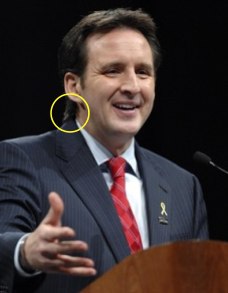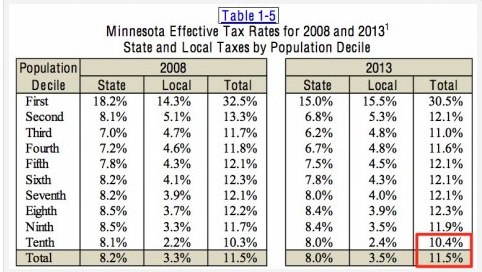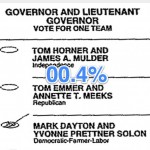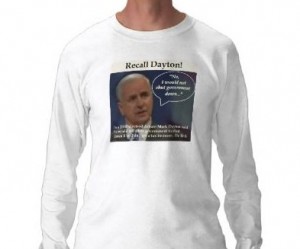On a weekly basis, Garrison Keillor reminds Minnesotans that we are above average. But we didn’t need him to tell us that. We’re a pretty innately smug bunch when it comes to our state. Call it “Minnesota Exceptionalism.”
We’re especially smug about our health care system. Therefore, some of us were not all that sure we needed Obamacare’s private health insurance mandate, which is presently the only politically feasible way of improving health insurance coverage and banning pre-existing condition restrictions.
But we do.

It is true that Minnesota is better off than the rest of the nation. Nine percent of Minnesotans lack health insurance coverage, and that’s much better than the nation as a whole, where 16% are uninsured.
We can rest assured that we aren’t suffering nearly as much as many other states, such as Texas (27% uninsured), Mississippi (24% uninsured), Louisiana (22% uninsured), Nevada (22% uninsured), and Oklahoma (22% uninsured). These GOP strongholds are suffering more at the hand of the GOP’s shameless health reform stonewalling than we are.
But let’s not delude our exceptional selves. Minnesota needs the private insurance mandate too. After all, using the same kind of health insurance mandate the Supreme Court just upheld, Massachusets has a much better record than Minnesota. Under ArneCare in Minnesota, we have 9% uninsured, which is better than average. But under ObamneyCare in Massachusetts, they have only 5% uninsured.
Moreover, we self-congratulatory Minnesotans should never forget that in the shadows of Minnesota’s overall 9% uninsured rate are pockets of much deeper health care despair. For instance, more than a quarter (27%) of low income adult Minnesotans are uninsured. That’s a little bit of Texas in our midst.
No, 9% is not good enough. That’s 463,100 of our Minnesota friends, neighbors, and coworkers who are just one metastasized cell or black ice sheet away from a mountain of medical bills, and the bankruptcy that so often goes with it.
That’s 463,100 Minnesotans delaying medical care until medical care becomes much more expensive, and often much less effective.
That’s 463,100 Minnesotans who obviously don’t stop getting hurt or ill, and therefore are forced to shift their enormous medical expenses to the rest of us, which in turn forces more of us to drop our own coverage.
That’s 463,100 Minnesotans — the population of Rochester, Duluth, St. Cloud, Eagan, Plymouth, Lino Lakes, Willmar and Ramsey, combined.
That can’t be ignored. Minnesota needs the insurance mandate, and the rest of Obamacare too. So thank you Heritage Foundation, Newt Gingrich, Don Nickles, Mitt Romney and, now, John Roberts for giving it to us.
– Loveland
Note: This post also was featured as a “best of the best” on Minnpost’s Blog Cabin feature.
 The last time a Minnesota DFL Governor was able to appoint a State Supreme Court Justice, the Cold War was still officially underway. Bill Clinton was an obscure Governor of a small state, a quixotic wannabe instead of an accomplished elder statesman. Arnold Schwartzenegger was a cartoon character in The Terminator 2, instead of a disgraced former Governor. In fact, 1991 was so long ago that the Twins actually won a World Series that year, and something called the “Minnesota North Stars” was in the Stanley Cup Finals.
The last time a Minnesota DFL Governor was able to appoint a State Supreme Court Justice, the Cold War was still officially underway. Bill Clinton was an obscure Governor of a small state, a quixotic wannabe instead of an accomplished elder statesman. Arnold Schwartzenegger was a cartoon character in The Terminator 2, instead of a disgraced former Governor. In fact, 1991 was so long ago that the Twins actually won a World Series that year, and something called the “Minnesota North Stars” was in the Stanley Cup Finals.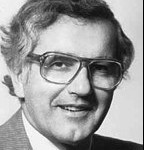 Twenty-one years is too long for any state to go with one party thoroughly controlling it’s State Supreme Court. So, let’s celebrate Governor Dayton’s historic appointment of Minnesota’s first female African American Minnesota Supreme Court Justice, Wilhelmina Wright. But let’s also celebrate the long overdue movement towards a return to balance in Minnesota’s judicial branch.
Twenty-one years is too long for any state to go with one party thoroughly controlling it’s State Supreme Court. So, let’s celebrate Governor Dayton’s historic appointment of Minnesota’s first female African American Minnesota Supreme Court Justice, Wilhelmina Wright. But let’s also celebrate the long overdue movement towards a return to balance in Minnesota’s judicial branch.
